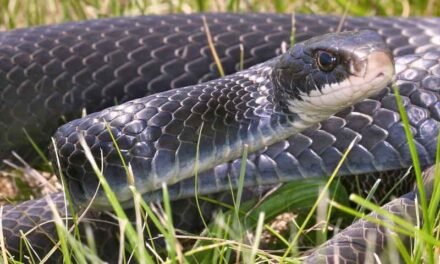The Blue Racer Snake (Coluber constrictor foxii) is a non-venomous species that can be found in a variety of habitats throughout North America. Despite their non-venomous nature, Blue Racer Snake bites can still occur and can be painful and potentially dangerous. In this blog, we will explore the symptoms, treatment, and prevention tips for Blue Racer Snake bites.
Symptoms of Blue Racer Snake Bites
Blue Racer Snake bites are typically characterized by a sharp pain at the site of the bite. The affected area may also become swollen, red, and tender to the touch. In some cases, the bite may result in bleeding or blistering. While Blue Racers are not venomous, their saliva can contain bacteria that can cause infections, so it is important to monitor the bite site for signs of infection, such as pus or fever.
Treatment for Blue Racer Snake Bites
If you are bitten by a Blue Racer Snake, it is important to remain calm and seek medical attention immediately. While Blue Racer bites are not typically life-threatening, prompt treatment can help to prevent infections and minimize discomfort. Treatment may include cleaning the bite site with soap and water, applying a cold compress to reduce swelling, and taking pain medication as needed.
In some cases, antibiotics may be prescribed to prevent or treat infections that can result from Blue Racer Snake bites. If the bite is severe or if there are signs of an allergic reaction, such as difficulty breathing or swelling of the face, emergency medical treatment may be necessary.
Prevention Tips
Preventing Blue Racer Snake bites is the best way to avoid the potential risks associated with these bites. To reduce your risk of being bitten by a Blue Racer, consider the following tips:
- Be aware of your surroundings: Blue Racers are often found in open fields, forests, and grasslands, so it is important to be aware of your surroundings when spending time in these areas.
- Wear protective clothing: Wearing long pants and boots can help to protect your legs and feet from snake bites. It is also a good idea to wear gloves when handling brush or debris.
- Avoid handling snakes: While Blue Racers are non-venomous, they can still bite and should be treated with caution. If you encounter a snake in the wild, keep a safe distance and avoid handling it.
- Keep your property clean and well-maintained: Removing brush, debris, and other potential hiding spots for snakes can help to reduce the likelihood of encountering Blue Racers on your property.
Conclusion
Blue Racer Snake bites can be painful and potentially dangerous, but with prompt medical attention, most people are able to recover without long-term complications. By taking steps to prevent snake bites and being aware of the symptoms and treatment options, you can minimize your risk of experiencing the negative effects of these bites. Remember to always treat snakes with caution and respect, and to seek medical attention if you are bitten by a Blue Racer or any other snake species.





